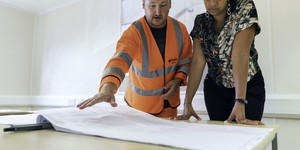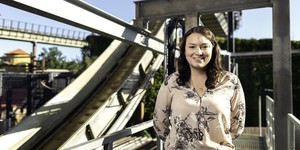Log In
Summary
*Note:
For this science project you will need to develop your own experimental procedure. Use the information in the summary tab as a starting place. If you would like to discuss your ideas or need help troubleshooting, use the Ask An Expert forum. Our Experts won't do the work for you, but they will make suggestions and offer guidance if you come to them with specific questions.
If you want a Project Idea with full instructions, please pick one without an asterisk (*) at the end of the title.
If you want a Project Idea with full instructions, please pick one without an asterisk (*) at the end of the title.
Abstract
Start with 7 drinking straws and 14 paper clips. Use the paper clips to fasten the straws together. Here's how: 1) Clip two paper clips together, narrow end to narrow end. 2) Push the wide ends of each clip into the end of a straw. That's it! Connect four straws to make a square, and three straws to make a triangle. Now test which shape is stronger. Hold the shapes vertically, with an edge or a vertex resting on the tabletop. Have a helper push on the opposite side or vertex. Which shape distorts more easily? How can you strengthen it? (Hint: you can use two more straws and four more paper clips.) What is the most stable structure you can build using no more than 20 straws and 40 paper clips? How much weight will it support? (WGBH Staff, 2000)Bibliography
WGBH Staff, 2000. "Building Big Educator's Guide, Activity: Straw Shapes" Educational Print and Outreach Department, WGBH Educational Foundation [accessed May 26, 2006] http://www.pbs.org/wgbh/buildingbig/educator/act_straw_ei.html.Ask an Expert
Do you have specific questions about your science project? Our team of volunteer scientists can help. Our Experts won't do the work for you, but they will make suggestions, offer guidance, and help you troubleshoot.
Global Connections
The United Nations Sustainable Development Goals (UNSDGs) are a blueprint to achieve a better and more sustainable future for all.
This project explores topics key to Industry, Innovation and Infrastructure: Build resilient infrastructure, promote sustainable industrialization and foster innovation.
Careers
If you like this project, you might enjoy exploring these related careers:
Career Profile
The essayist and poet Ralph Waldo Emerson called Greek architecture the "flowering of geometry." Architects blend art and science, designing structures for people, such as houses, apartments, schools, stores, malls, offices, places of worship, museums, sports stadiums, music theaters, and convention centers. Their designs must take into account not only the structure's appearance, but its safety, function, environmental impact, and cost. Architects often participate in all phases of design,…
Read more
Career Profile
If you turned on a faucet, used a bathroom, or visited a public space (like a road, a building, or a bridge) today, then you've used or visited a project that civil engineers helped to design and build. Civil engineers work to improve travel and commerce, provide people with safe drinking water and sanitation, and protect communities from earthquakes and floods. This important and ancient work is combined with a desire to make structures that are as beautiful and environmentally sound, as they…
Read more
Career Profile
Mathematicians are part of an ancient tradition of searching for patterns, conjecturing, and figuring out truths based on rigorous deduction. Some mathematicians focus on purely theoretical problems, with no obvious or immediate applications, except to advance our understanding of mathematics, while others focus on applied mathematics, where they try to solve problems in economics, business, science, physics, or engineering.
Read more
Career Profile
Do you dream of building big? Civil engineering technicians help build some of the largest structures in the world—from buildings, bridges, and dams to highways, airfields, and wastewater treatment facilities. Many of these construction projects are "public works," meaning they strengthen and benefit a community, state, or the nation.
Read more
Related Links
Cite This Page
General citation information is provided here. Be sure to check the formatting, including capitalization, for the method you are using and update your citation, as needed.MLA Style
Science Buddies Staff.
"Shapes with Straws." Science Buddies,
28 July 2017,
https://www.sciencebuddies.org/science-fair-projects/project-ideas/CE_p017/civil-engineering/shapes-with-straws?class=AQX4Lr5sgid4h_tb1yGBKFINgw-HXaI2IMKCTxL6jh1aAKnt92v3x9vT43dzZpxTU1HkK4m2wvjkqlDcvwAgiCSW.
Accessed 20 Apr. 2024.
APA Style
Science Buddies Staff.
(2017, July 28).
Shapes with Straws.
Retrieved from
https://www.sciencebuddies.org/science-fair-projects/project-ideas/CE_p017/civil-engineering/shapes-with-straws?class=AQX4Lr5sgid4h_tb1yGBKFINgw-HXaI2IMKCTxL6jh1aAKnt92v3x9vT43dzZpxTU1HkK4m2wvjkqlDcvwAgiCSW
Last edit date: 2017-07-28
Explore Our Science Videos
How To Curl Metals With Heat
Make a Whirlybird from Paper
DIY Mini Drone Part 6: Motion Control











